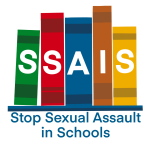 This exemplary initiative demonstrates how a sexual health organization can improve outcomes for K-12 students.
This exemplary initiative demonstrates how a sexual health organization can improve outcomes for K-12 students.
by Patty Durell, MOASH Sexual Violence Prevention Coordinator
In 2021, the Michigan Organization on Adolescent Sexual Health (MOASH) identified a gap in available studies on how Michigan youth understand sexual violence social norms. MOASH built a Sexual Violence Prevention (SVP) team made up of advocates and educators across the state. The team developed a survey that was modeled off of the Michigan Public Health Institute’s (MPHI) 2019 Michigan Sexual Violence Prevention survey. The survey was shared online by MOASH and its networks in January 2021 and May 2021. It captured data from 493 youth throughout Michigan between the ages of 13-19. This valuable youth perspective is necessary to expand violence prevention education in Michigan K-12 classrooms.
This survey is meant to center the experiences of Michigan youth and use the results to inform policy, prevention measures, and community-building efforts. Through identifying the gaps of knowledge among youth MOASH and other advocates can better develop and curate resources to increase consent literacy in schools.
Sexual violence requires a myriad of approaches to address, and providing adequate consent education for youth is one of many preventive measures. Taryn Gal (she/her), executive director of MOASH, shares, “I am so grateful for the MOASH team and program partners who took the time and energy to develop, implement, and analyze results from this important study. Perhaps what is most shocking is that the results are so remarkably unsurprising.”
The results reflect that a majority of surveyed youth had an awareness of sexual violence in their community, whether as a first-hand experience or something they heard from others. Gal continues, “The findings further affirm what young people have already been sharing with us about their experiences around sexual violence social norms: youth are aware of sexual violence in the communities, cisgender straight boys are the least likely to have an understanding of consent, and sexual violence is present within the LGBTQIA+ community.” Most harrowing among the data was that 70% of youth knew someone who was sexually assaulted and 71% knew someone who experienced abuse. Knowing that youth directly or indirectly experience sexual violence invites advocates to think critically about how to mitigate this violence – and encourages them to act urgently to implement programs, curriculum, and resources to prevent it.
This survey relied on different identities as a point of comparison between youth. Gender identity largely contributed to how youth understood consent, their connections to people around them, and support available to them. For example, youth who identified as cisgender boys had a less advanced understanding of consent, often having beliefs that perpetuated harm and cultural myths about sexual violence.
The trend among straight youth and cisgender boys having comparably underdeveloped understandings of consent is not lost on youth themselves. Eleventh grade high school student and member of MOASH’s Michigan Youth Consent Advisory Board (MY CAB) Avery Causley-Ingram (she/her) comments on the final data report, “The cisgender boys around me lack knowledge on consent, respect, and boundaries. This reinforces the privilege they possess, and there is added privilege when they are white.” Causley-Ingram cares deeply about consent education and recognizes the impact of its absence in her own school. “The cisgender white community has had the luxury of staying uneducated,” Causley-Ingram shares in expansion of the data. She also noted the gap in knowledge on digital consent. “Access to relevant information about what it means to have digital boundaries would improve youth’s relationships regarding technology and making sure it’s as healthy and safe as possible, for myself included.” Youth are experiencing violence and want more education on how to cultivate safer communities; the responsibility is on adults to ensure we are meeting these needs.
Sexual identity also played a big role in how youth understand consent, their connections to people around them, and support available to them. LGBQ+ students did not feel as connected to or supported by their schools, families, and neighborhoods as straight youth, but LGBQ+ youth had advanced knowledge of practicing consent. They were able to differentiate examples of healthy and unhealthy consent more frequently.
MOASH’s results are supported by nationally collected data. A 2021 GLSEN report on Michigan shares that “the vast majority of LGBTQ+ students in Michigan regularly heard anti-LGBTQ+ remarks. Many also regularly heard school staff make homophobic remarks (55%) and negative remarks about someone’s gender expression (70%).” The report expands with, “Most LGBTQ+ students in Michigan experienced anti-LGBTQ+ victimization at school. Most never reported the incident to school staff (61%), and of those who had, only 22% of LGBTQ+ students said that it resulted in effective staff intervention,” (GLSEN MI). National trends reveal the same sentiment of LGBQ+ youth not being supported in schools leading to a lack of connectedness (GLSEN).
Digital consent findings highlight the gaps in knowledge depending on youth sexuality and gender identity. Digital consent includes asking for permission to see, send, and share interactions made via technology. Digital abuse is the use of technologies such as texting and social networking to bully, harass, stalk, or intimidate a partner. To avoid this, digital consent–which includes asking before sending or forwarding an explicit photo–is crucial. LGBQ+ youth had a significantly higher understanding of digital consent than straight youth, and students who identified as boys and/or as straight were in more agreement with statements that were not examples of healthy digital consent.
Gal reacts to this with, “We have already known that there is an abundance of misinformation that must be corrected in order to shift our societal norms, however, clarity around rape myth acceptance, digital consent, peer support for survivors, and school connectedness gives us an initial general direction of where to focus education efforts.” Gal makes the necessary distinction that there are both societal changes needed to create a safe culture of consent for youth in Michigan, and there are concrete curriculum modifications that can be made in education to better inform youth on consent, sexual violence, prevention strategies, and more. Youth are not responsible for correcting the larger misconceptions on sexual violence prevention, but they will make safer choices when informed in school.
One resource MOASH and the SVP team has created to support the spread of prevention education is the K-5 Consent Toolkit. Consent education is necessary for youth of all ages. Bodily autonomy, boundary setting, safe digital practices, and healthy relationships fall under the huge umbrella of consent. This toolkit aims to create cultural shifts around consent, respond to parent, guardian, educator, and student needs, provide resources for younger introduction of material, ensure accessibility of the suggested resources, and help communities navigate the implementation of consent education in school settings. MOASH and the SVP team are in the process of expanding the toolkit for 6th, 7th, and 8th grades.
MOASH will collect data again in 2023. Gal shares, “Although this survey provides a wealth of important data, it also highlights areas where more data is needed.” MOASH hopes to use their 2023 survey as an opportunity to compare Michigan youth experiences and continue refining what can be implemented to combat sexual violence and how it is normalized. As the push for prevention education grows, centering the voices and experiences of youth continues to be the heart of MOASH’s mission of advancing access to adolescent sexual health resources and information.
MOASH is a 501(c)(3) non-partisan organization that was founded in 2008 by statewide leaders and advocates of adolescent sexual health. Today, MOASH mobilizes youth voices, engages community partners, and informs decision-makers to advance sexual health, identities, and rights in the state. MOASH is committed to centering youth voices, and all projects are youth-informed from start to finish. For more, reach out to Sexual Violence Prevention Coordinator Patty Durell (she/her) at patty.durell@moash.org.
